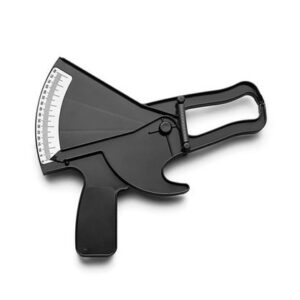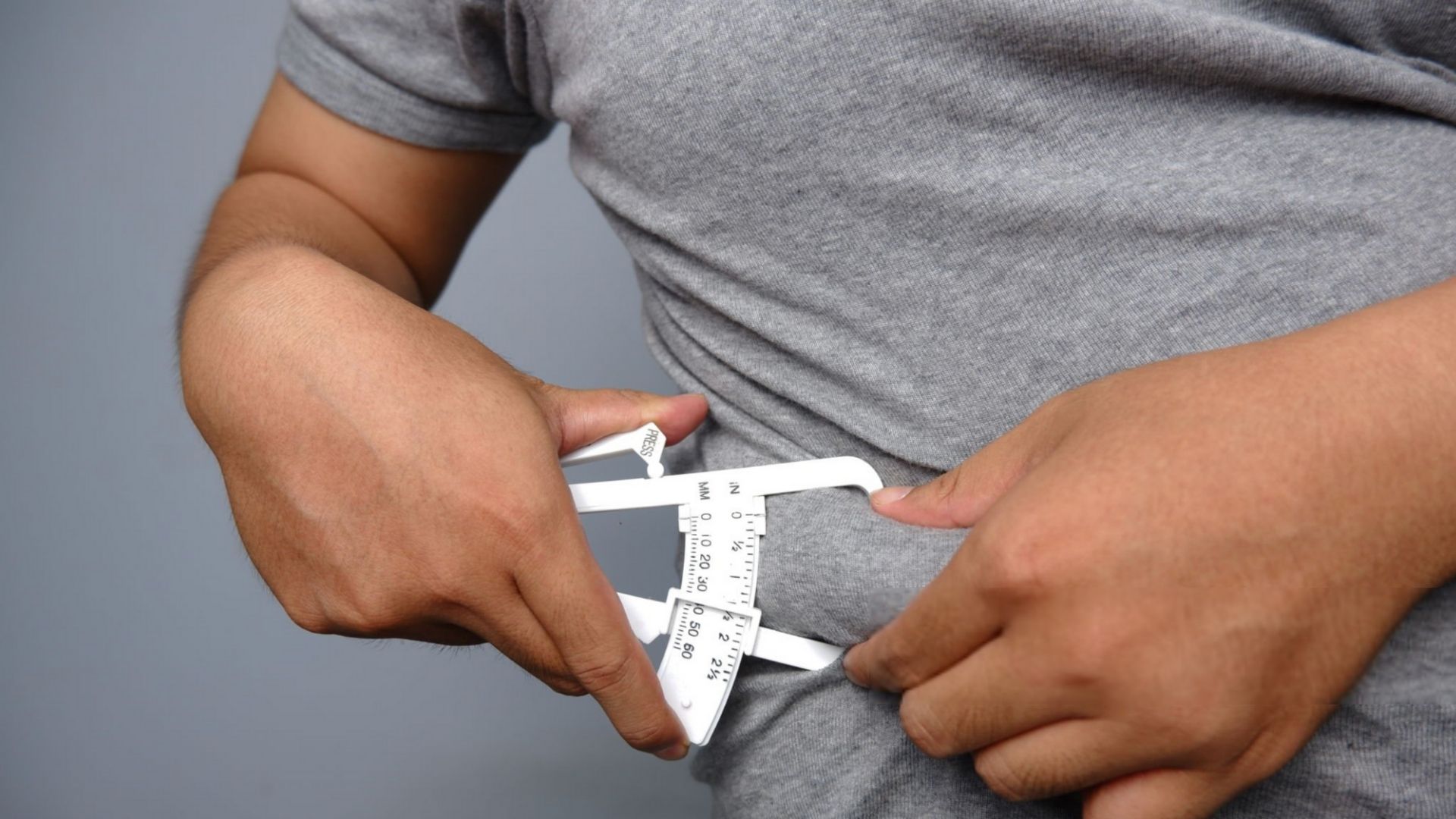This text was prepared based on the manual of the Sanny Scientific Skinfold Caliper, as well as recognized scientific guidelines (Pollock, Jackson, Lohman, ACSM).
What is a skinfold caliper and why use it
 The skinfold caliper is a measuring instrument used to assess the thickness of skinfolds, that is, the thickness of subcutaneous fat that accumulates just beneath the skin. It allows for an accurate estimation of total body fat percentage through scientifically validated mathematical formulas.
The skinfold caliper is a measuring instrument used to assess the thickness of skinfolds, that is, the thickness of subcutaneous fat that accumulates just beneath the skin. It allows for an accurate estimation of total body fat percentage through scientifically validated mathematical formulas.
Measurement with a skinfold caliper is one of the most accessible, fast, and safe ways to assess body composition and is widely used in gyms, nutrition clinics, physical education offices, and scientific research.
How to perform the measurements correctly
What you will need:
A properly calibrated skinfold caliper
A skin marking pencil (dermatographic pen)
Knowledge of the exact location of the skinfold sites (described below)
⚠️ Important: Always take measurements on the right side of the body (right hemibody), with the individual at rest and skin dry.
Each skinfold should be measured three times, and you should use the median (the middle value).
Step-by-Step Guide:
Identify the correct anatomical point. Use a measuring tape to locate the exact position.
Mark the spot using a dermatographic pencil.
With your left hand (index finger and thumb), grasp the skinfold—pinching the skin and subcutaneous fat (not the muscle).
Position the caliper 1 cm below your fingers, perpendicular to the skin.
Wait 2 to 3 seconds, then read the value in millimeters (mm).
Repeat the measurement 3 times and use the median value for greater accuracy.
Tips:
Always measure with the person at rest, and avoid testing after intense physical activity.
Avoid measuring over clothing—take skinfold measurements directly on the skin.
Use the same protocol (3 or 7 skinfolds) during follow-ups to ensure comparability.
⚠️ If the difference between measurements exceeds 5%, repeat the process.
Main Skinfold Sites and Their Locations
Men and Women (7-Site Protocol)
Triceps
Back of the upper arm, at the midpoint between the shoulder (acromion) and elbow (olecranon).
Skin is pinched vertically, parallel to the arm.Chest (Pectoral)
Men: Between the armpit and the nipple
Women: About 1/3 of the distance between the armpit and the nipple
Taken diagonally.
Abdomen
About 2 cm to the right of the navel.
Taken vertically, parallel to the midline.Thigh
Over the rectus femoris muscle, halfway between the groin and the patella (knee).
The person should slightly bend the right leg forward and shift weight onto the left leg.Suprailiac
Just above the iliac crest (hip bone), along the mid-axillary line.
Taken diagonally, pointing downward and forward.Midaxillary
Along the midline of the armpit, at the height of the xiphoid process (lower part of the sternum).
Taken horizontally or diagonally, with the arm slightly lifted.Subscapular
Below the scapula (shoulder blade), in a diagonal direction, about 2 cm below the lower angle of the scapula.
Calculate Your Body Fat Percentage Now
Body Fat Calculator (Skinfold Caliper)
⚖️ Need help to convert your weight in pounds to kilograms to add to the calculator?
This calculator uses kilograms (kg), which is the international metric unit for weight. If you’re more familiar with pounds (lbs), use this quick converter below to input your weight correctly.
Pounds to Kilograms Converter
⚠️ Important: Skinfold calipers used in the United States often display measurements in inches. This calculator requires values in millimeters (mm).
Use the converter below to easily make the conversion before entering your measurements.
Inches to Millimeters Converter
Interpretation of Results (% Body Fat)
🧔 Men
| Age | Athlete | Fit | Acceptable | Above Ideal |
|---|---|---|---|---|
| 18–25 years | 6–13% | 14–17% | 18–22% | > 22% |
| 26–35 years | 8–15% | 16–19% | 20–24% | > 24% |
| 36–45 years | 10–17% | 18–21% | 22–26% | > 26% |
| 46–55 years | 11–18% | 19–23% | 24–28% | > 28% |
| 56+ years | 13–20% | 21–25% | 26–30% | > 30% |
👩 Women
| Age | Athlete | Fit | Acceptable | Above Ideal |
|---|---|---|---|---|
| 18–25 years | 14–21% | 22–25% | 26–30% | > 30% |
| 26–35 years | 15–22% | 23–27% | 28–31% | > 31% |
| 36–45 years | 16–23% | 24–28% | 29–32% | > 32% |
| 46–55 years | 17–24% | 25–29% | 30–33% | > 33% |
| 56+ years | 18–26% | 27–30% | 31–35% | > 35% |
📌 Notes:
These ranges are based on scientific research and international guidelines.
“Very Low” is not necessarily ideal for health and may pose risks.
“Athlete” and “Fit” are desirable for sports performance and metabolic health.
“Acceptable” is common among non-athletic populations.
“Above Ideal” suggests an increased risk of metabolic diseases and should be monitored.



